In the meantime we have been honoured to receive a plaque of recognition from the House of Representatives of Cyprus. The President of the House, Mr Yiannikis Omirou presented us with the award yesterday in a ceremony in Nicosia. For the team it is a great honour to be recognised, and only strengthens the ties connecting Cyprus and Australia! We look forward to many more years of work in Paphos, we hope you can join us on the blog (or maybe in person!).
|
We are now packing up for the return flight to Australia. Its been a hard season but a successful one, with much work achieved. As always more work actually will continue in coming months back in Australia as we prepare our findings for publication and we will periodically update the blog. In the meantime we have been honoured to receive a plaque of recognition from the House of Representatives of Cyprus. The President of the House, Mr Yiannikis Omirou presented us with the award yesterday in a ceremony in Nicosia. For the team it is a great honour to be recognised, and only strengthens the ties connecting Cyprus and Australia! We look forward to many more years of work in Paphos, we hope you can join us on the blog (or maybe in person!). Excavation director Dr Craig Barker on the ancient theatre with the plaque from the House of Representatives of the Republic of Cyprus.
1 Comment
The University of Sydney team is only able to work in Paphos because we work closely with the Department of Antiquities of the Republic of Cyprus. They are the government body in charge of all decisions made in relation to the management of Cyprus' heritage and issue permits for archaeological teams (including foreign missions like us) to run archaeological excavations and survey projects. We must work within their guidelines and publish in their journals and reports. In return we are contributing towards a greater understanding of the ancient history of this remarkable island, and our work at Paphos is part of a much larger picture being put together by various archaeologists
To get an idea of the scope of the work that the Department of Antiquities covers in a country like Cyprus visit their website. It is fascinating to see how widely ranged their work is - excavation, conservation, preservation, education, prosecution, management and publication. 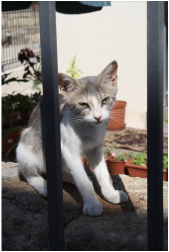 Hello my name is Simba. I am a little kitten, only a few weeks old, and here is my contribution to the archaeology blog. “Why am I writing on an archaeological blog?” I hear you ask. Well, I am the dig mascot. Here, let me explain. I was born a few weeks ago near the Apollo archaeological dig house. As I was learning to walk and move around I was excited as I thought I had a multi-story building all to myself. Then suddenly people turned up. Firstly it was a group speaking Polish. Then they were replaced by a group speaking English, but with a funny accent. I later discovered they were Australian but it took me a while to understand what they were talking about. Both groups were a bit peculiar, but were both very kind to me. They carried around small bits of broken pottery and looked at them very intently. They even spend hours cleaning the dirt off them and sorting them. People kept on mentioning dates, and context numbers, and looking at plans and drawings. Sometimes they shuffle some of the pottery around on trays with labels – they go to Bob for photos and to Chris for illustration, then come back and get boxed. And they have hundreds of boxes but won’t let me play in them. All very, very strange. And they come back from site each day covered in soil. Why don’t they lick themselves clean? Luckily the Australian team love me. Danny keeps on feeding me. All the time. It is so good, although I think I may be putting on some weight. How does my bum look in these pants? Chris pretends he doesn’t like me, but I know when he hisses at me, it’s actually a sign of affection. I will jump on him one day to prove it. Some of the other Australians loved to give me hugs and cuddles – although they won’t let me in the kitchen. Damn! Anyway, now I am fully aware of the archaeological process, I am even considering studying archaeology at university. I have my eye on a Roman red slip research project, and am quite interested in chronological development of marble architecture. However I had better finish cat school first. I hear the Australians are finishing soon, and the Apollo dighouse will be closed up. No-one to be here to feed me! So I believe quite a few people living in Paphos read this blog. If anyone has a home for me I promise to be good! And I can talk to you at length now about stratigraphic changes and how to draw a Harris Matrix. In the meantime I am going to lie in the sun and enjoy the life of being a dig mascot! Images of the nymphaeum being backfilled on the final day of work on site. The matting and the soil will protect the mosaic and plaster until a proper conservation treatment can be completed, and will prevent deterioration. The general policy in Cyprus now is to build covers over mosaics that are exposed, or else re-bury them. Visitors to the Paphos Museums at the House of Dionysos and the House of Ion will have seen the buildings protecting the mosaic floors. 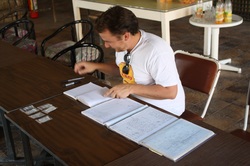 Meanwhile Ronan is finishing the Trench 11B digbook. Our project uses both a trench diary (digbook) and context sheets for each individual deposits. A tradition on the project is the weekly Director's Tour - each trench describes the work they have completed to the rest of the team so that specialists (and other diggers) have a better understanding of the contexts they will be studying. Join the team for the final tour of 2011.
By Taryn Gooley (archaeologist)
While photographs can tell us a great number of things about an artifact or archaeological site, they can still miss many details. This is why drawing is one of the most important aspects of Archaeology, as Chris our resident illustrator will tell you. Drawing an object or a plan of a site enables us to emphasise certain areas allowing other archaeologists to easily identify features of said objects or sites. As today was our last day on site we spent the morning doing plans of our trenches. This task is usually a fairly straightforward one, although it can be very time consuming. Trench 11B was a particularly difficult trench to plan due to the shape of the trench and the amount of architectural features found within it. Once we got into the groove of things however, things moved at a better pace. Drawing a plan of a trench usually involves taking measurements from one or more base lines that are strung up along the edges of the trench. Using a set scale (usually something simple like 1:20 or 1:50 depending on the size of your trench) we plot on graph paper, significant aspects of the trench such as trench boundaries, architectural features, bedrock cuts and wells to name a few. Once the general outline of the trench and its contents are plotted we fill in the detail so that anyone reading the plan can easily determine what is found in the trench. Archaeological plans are usually fairly basic, because of this you don’t need to be an artist to be good at drawing them. In fact artistic flair is usually discouraged as it can make reading the plan difficult (just one of the many things in archaeology I’m grateful for, as my artistic side was apparently lost during transit). Trench plans are tools that assist us in making sense of a trench even if we can’t be on site to look at it. This is particularly helpful when writing site reports or other publications when you’re away from the site. That’s all from me, hopefully you’ll all tune in again next year to see what we’ve been up to. Now I’m off to Malta! (Yet another perk of being an archaeologist – getting to travel all over for work and pleasure!) Danny Blackman takes us through a typical day in the dig inventory!
So what happens to all the stuff archaeologists dig up? Most people don’t ask; after all, the excitement of watching the Time Team lies in the moments of the actual finds in the field and the structures revealed as a field team digs further and further down, posing answers to questions about how people lived a cool millennium or so ago. But the story doesn’t end there – in fact, for some of us, that’s just the beginning. After the finds are born triumphantly back to the dighouse, they are cleaned up (endless happy hours of washing potsherds!), sorted into categories and then decisions made as to what will be formally inventoried – individually listed, conserved if necessary, described and recorded in drawings and photographs, and stored for future reference. And that’s where we come in. Working in inventory, or finds registration, is a bit like a mad hatter’s game of post office. The finds come to us from the specialist archaeologists who know their pottery (or marble or stone tools or whatever) and we allocate inventory numbers and dispatch items as required for photography or illustration. We also retrieve them as required from storage for further study or processing. Now all this sounds nice and simple – perhaps even boring - but the reality is seldom so straightforward or so tranquil. A typical day can go like this: 7.00 am Pick up nondescript potsherd left on desk and reach for the inventory book to record its details. 7.01 am Archaeologist A slopes in to ask where you’ve put her Very Important Find from 2 seasons back, which she wants to compare with something found yesterday. Put down sherd and go into store room to search. 8.30 am Emerge from store room, slightly shell-shocked but clutching Very Important Find. Try to find A, who has by now gone back to the site muttering darkly. Place Very Important Find on desk with note to self. Pick up original potsherd, which has by now fallen under desk. Try to find inventory book under 15 items which have been placed on desk by Archaeologist B with note requesting they be photographed immediately for pending publication. 8.45 am Start processing 15 items for photography (now ahead of the 45 items already awaiting photography). Random student rushes in to ask if you know where Dig Director is. After searching dig house, phone Director, who is out buying milk for breakfast. Meanwhile Illustrator, slightly the worse for wear after long night discussing serious archaeological issues at local bar, arrives to ask if you have items to be drawn, otherwise he’s going back to bed. 9.00 am Light cranky stove for breakfast cooks and resume processing items for photography. Frantically process some items for illustration so Illustrator won’t go back to bed. Archaeologist C arrives to complain that his important stuff wasn’t inventoried and processed last season and he really needs priority this year so he can complete his PhD. 9.30 am Breakfast time, so C finally leaves. Field team returns and troops through to wash hands etc before breakfast. Leave rest of items for drawing in bowl on desk, grab some breakfast and sit down to eat, after bargaining with field Trench Leaders for students from field team to help search store room after breakfast for items not located yesterday and urgently required for Archaeologist D. Feed dighouse cat. 9.50 am Clutching mug of tea, return to desk and resume processing items for drawing. 10.00 am Emergency trip to local Archaeological Museum store to retrieve boxes of inventoried finds for further processing. 11.15 am Return to dighouse, with two key boxes missing. Unload boxes. Resume processing items for drawing and find inventory book after mug of cold tea has been upset on it. Place inventory book out in sun to dry. Students emerge from store room to report complete failure. Direct them to second store room, which they have somehow not noticed. (It is after all their first year on the dig, and they are still trying to work out the geography of a dighouse which closely resembles the hotel in The Shining.) 12 noon Finish processing items to go to Illustrator, who has now woken up again. Conservator drops by to look at potsherds with major incrustations on them, and recommends soaking in vinegar after preliminary washing in water. Conservator sets items to soak in vinegar on inventory shelves, on top of D’s items from store room. Locate the 15 items to process for photography, which by now have been covered by items located by students in store room and items soaking in vinegar. Congratulate students on success. D arrives and passes on an email from Archaeologist E (back home in Sydney) who is writing a major article with pending publication date and urgently needs drawings and photographs of 10 key pieces of marble cornice. Unable to locate D’s items from store room. D leaves muttering darkly. Crawl round floor searching through boxes of marble. Team Architect wanders through to ask if you’ve seen dig Director. Locate Director, who is holed up in office trying to sort out dig accounts so far. 1.00 pm Lunchtime. Field team troops through again with buckets of finds and cheerful comments about the quiet morning you’ve surely had, working in the cool of the dighouse with constant access to tea and coffee. Bargain with Trench Leader for extra student to search for marble items still not located. Make hasty sandwich and eat. Take piece of fruit and get student started searching. Give Very Important Find to A, who has now solved her problem and can’t remember why she asked you to find it at all. 1.30 pm Resume processing 15 items for photography. Student searching for marble drops large piece of cornice on toe. Locate first aid box (under kitchen sink) but, after due consultation with Conservator and Photographer, decide injury may be major. Ring dig Director (who is out on site with important visitor) and arrange for student to be taken to local hospital. 2.30 pm Crawl round floor again to find last pieces of marble, after washing blood off offending cornice. Process pieces of marble to go to photography. Item soaking in vinegar is by now bubbling occasionally like a semi-dormant volcano and vinegar fumes are getting repellent. 3.45 pm Remove items found by students in store room from heap under desk, where they were placed while processing marble for photography/drawing for E, and put in box for D to assess. Notice that sky is getting darker outside. Resume processing B’s items for photography. 4.10 pm Ominous thunder and downpour starts. Rush outside and help Sorting Tables supervisor load finds on the sorting mats into bowls and boxes and haul indoors to spread out on bedroom floors. Retrieve inventory book, which is once again damp, and lay out on inventory shelves to dry. Run round building unplugging computers and closing windows, in course of which run into C, who emerges from bedroom (where he’s been working because of lack of space) with a box of items which absolutely have to be processed this week. Make wild promises and escape, bearing box. Find buckets and old towels to mop up leaks. 4.40 pm Shove C’s box into back of inventory shelves and resume processing items for photography for B. Pottery soaking in vinegar still bubbling ominously and smell is even more pungent. Find uneaten and now squashed lunchtime piece of fruit in marble box. Dispose of fruit. Students and Illustrator drop by to announce that they are going to the bar. D returns to collect items located earlier in store room by students. Search for box of items, which has mysteriously disappeared again, and eventually locate behind boxes from Museum. D mutters darkly. 5.30 pm Finish processing items for photography for B so Photographer can start on them first thing tomorrow. Recheck E’s email and discover that student has written down wrong inventory numbers for two pieces of marble cornice. Pull wrong pieces from Illustrator’s tray. Crawl round floor again checking through marble to find correct pieces and replace. Injured student returns, limping, to proudly display bandaged toe. 6.00 pm Check that Illustrator has enough work to keep busy tomorrow. Conservator drops by to check potsherd soaking in vinegar (still bubbling from time to time) and sets mended pot to dry on inventory shelves as well, in amongst items for photography. 6.15 pm Check that inventory book now dry and reach for original potsherd to allocate number. Potsherd missing. Finally located, after frenzied search behind C’s box of items. 6.40 pm Decide to allocate inventory number to potsherd tomorrow. Close up, feed dighouse cat and join students and Illustrator at bar. Believe it or not, it’s endlessly entertaining and interesting. Moreover, it’s a key part of the whole process. "This one goes in the amphora pile, this one in the plain ware pile, this one is architectural....."
|
BloggersEach season our team including the directors, students, architects, volunteers, ceramicists and other finds specialists will blog about the day to day sweat and adventures that come with life on an archaeological dig. Archives
May 2023
Categories
All
|
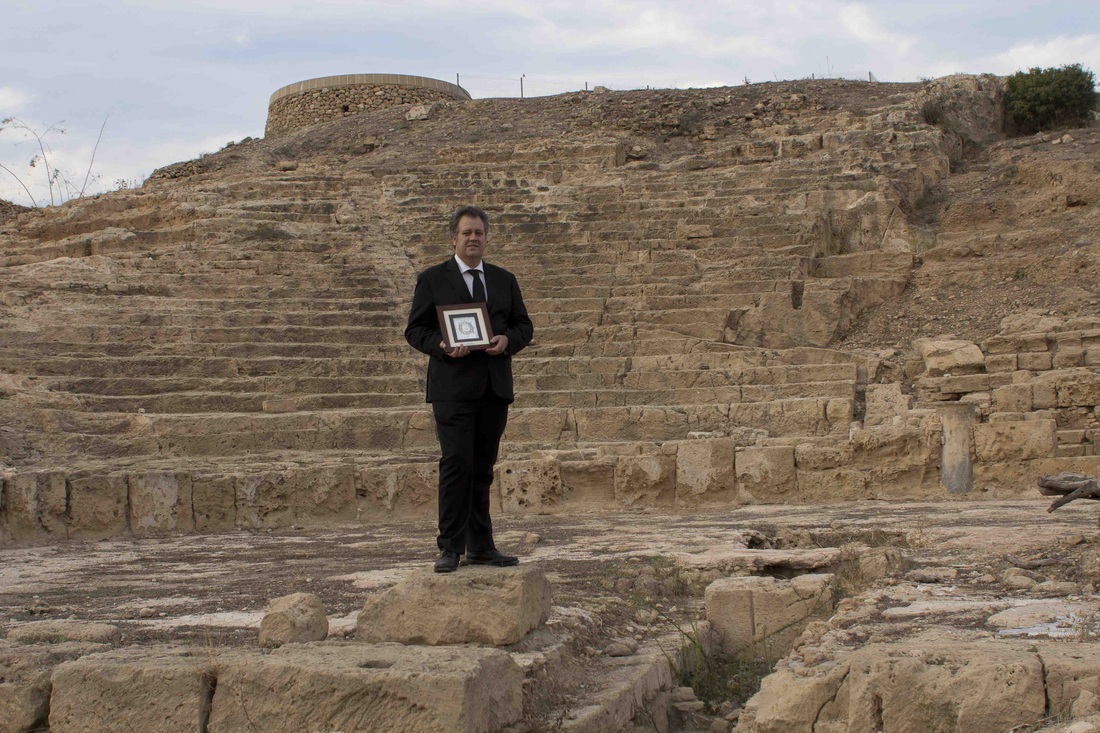
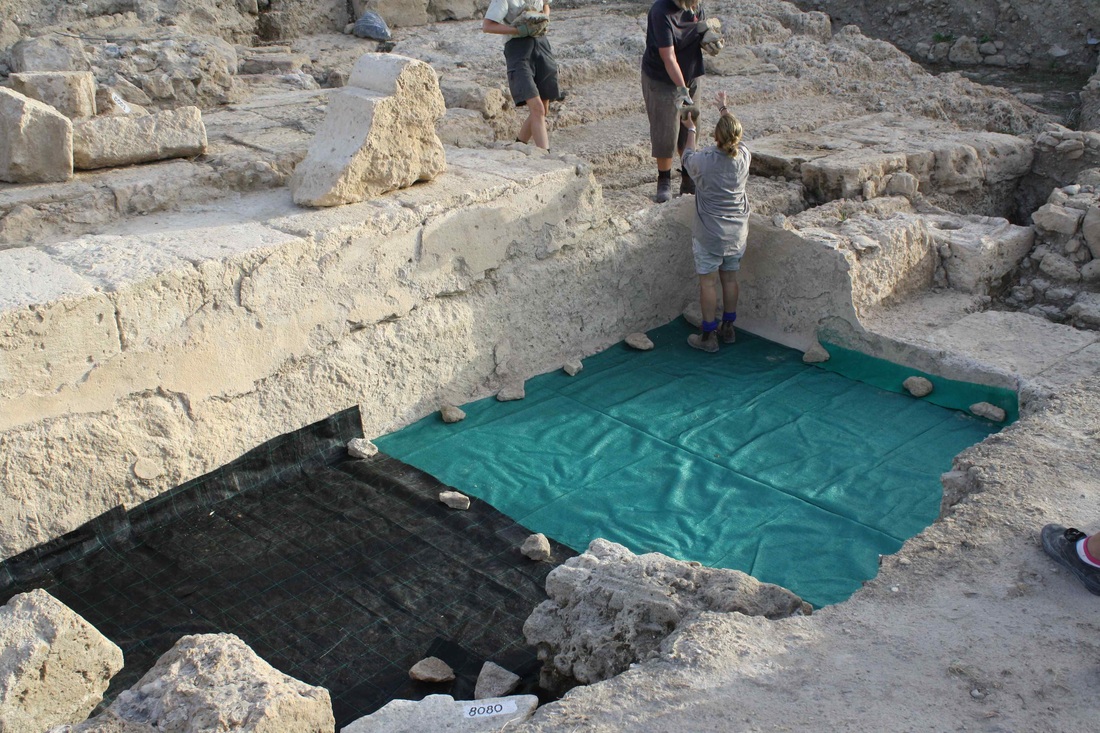
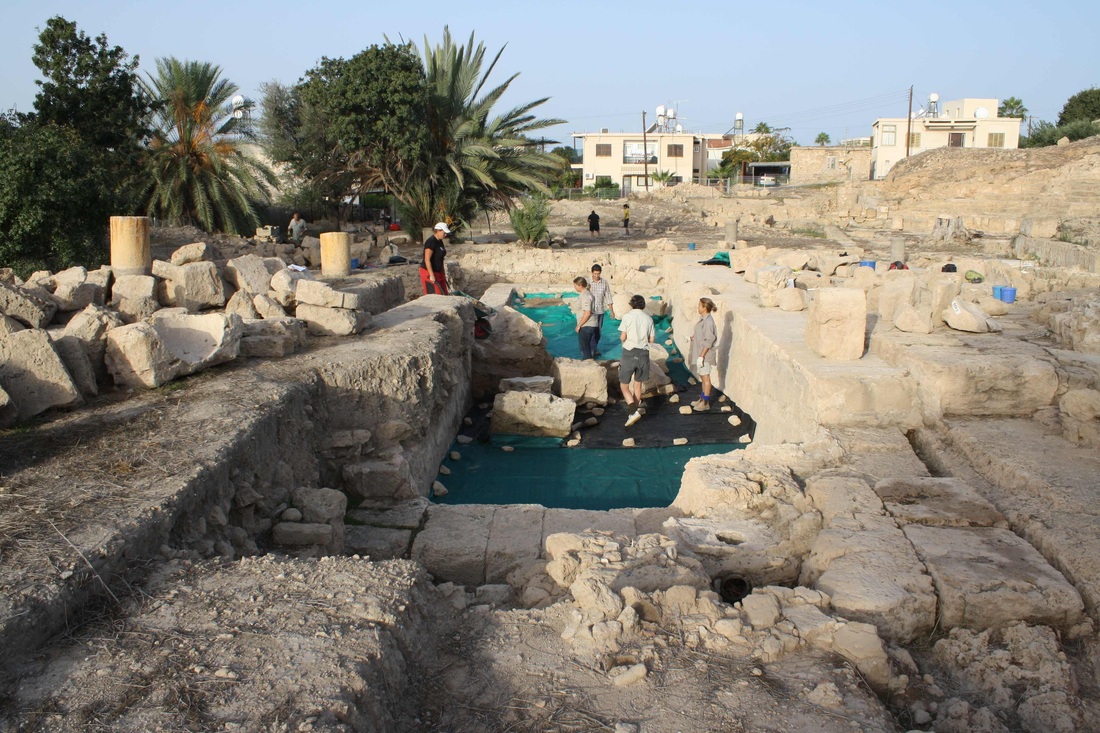
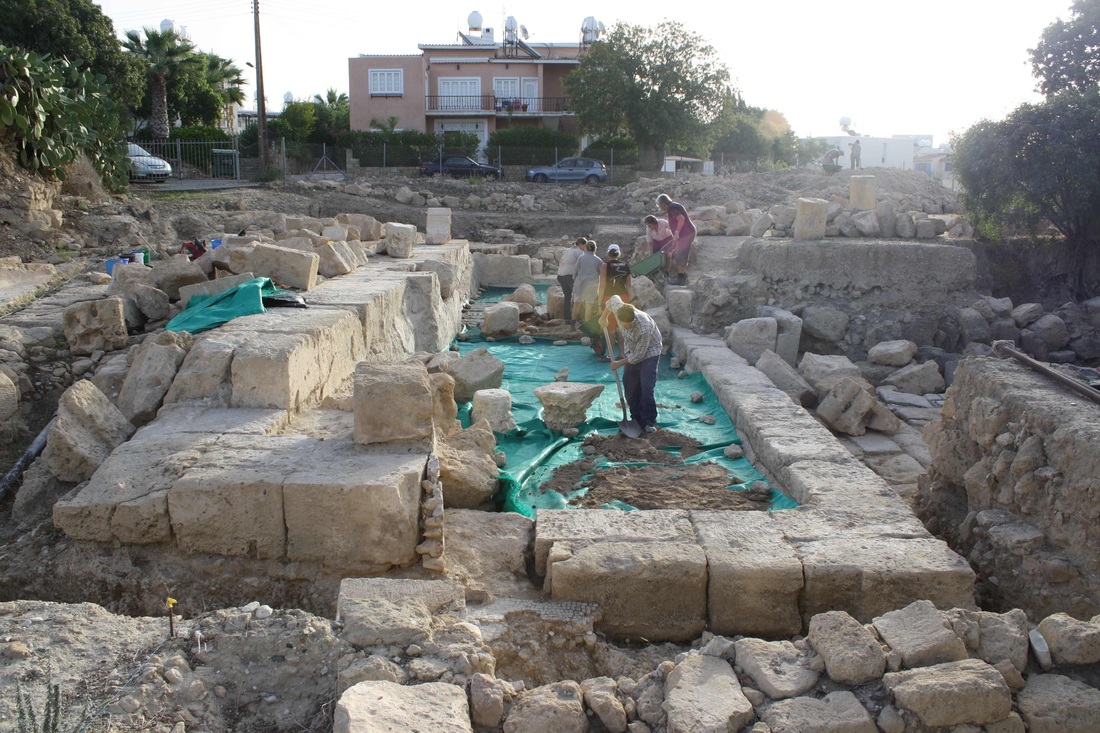
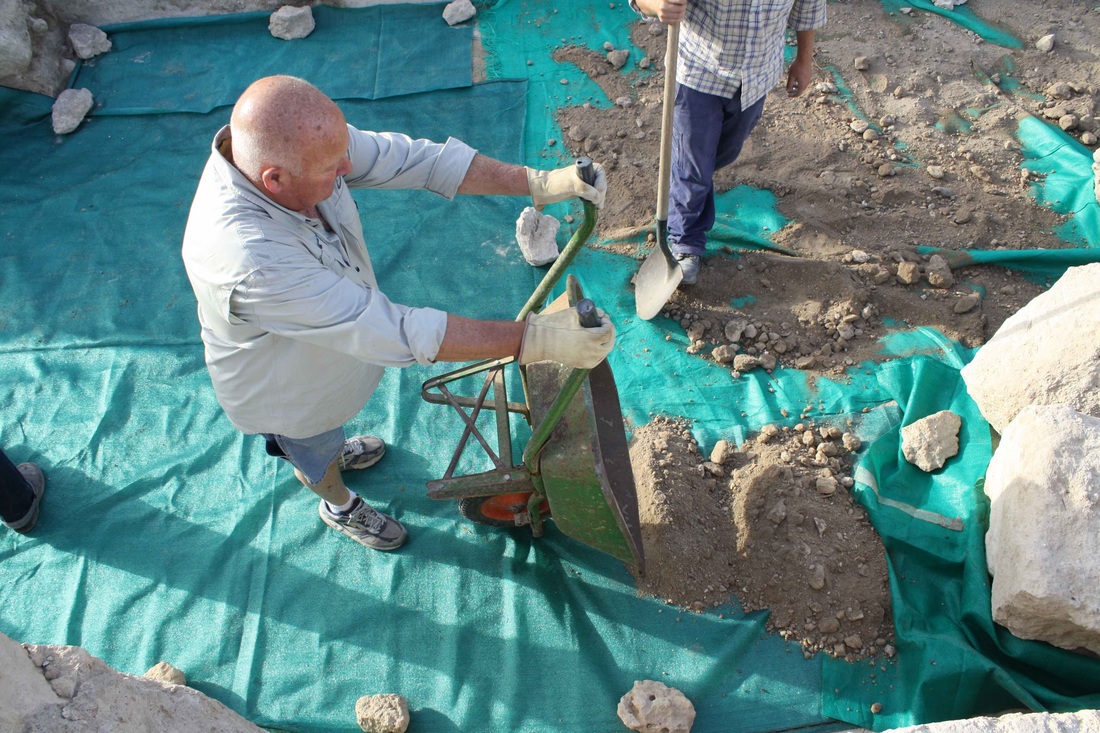
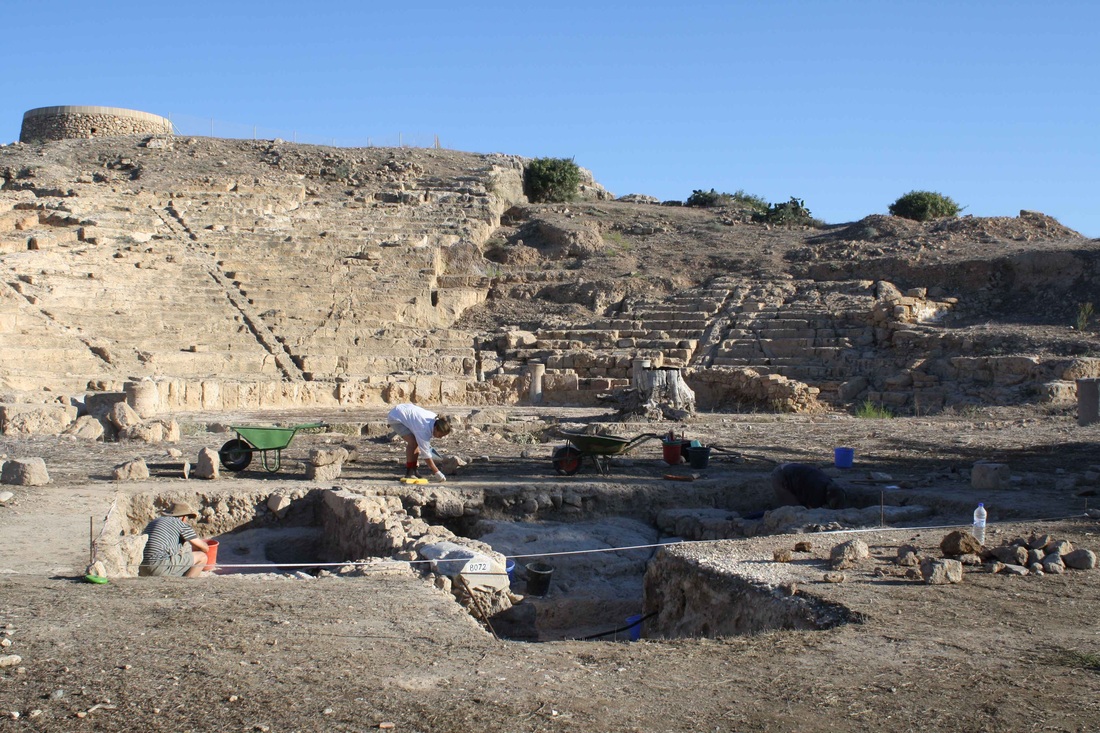
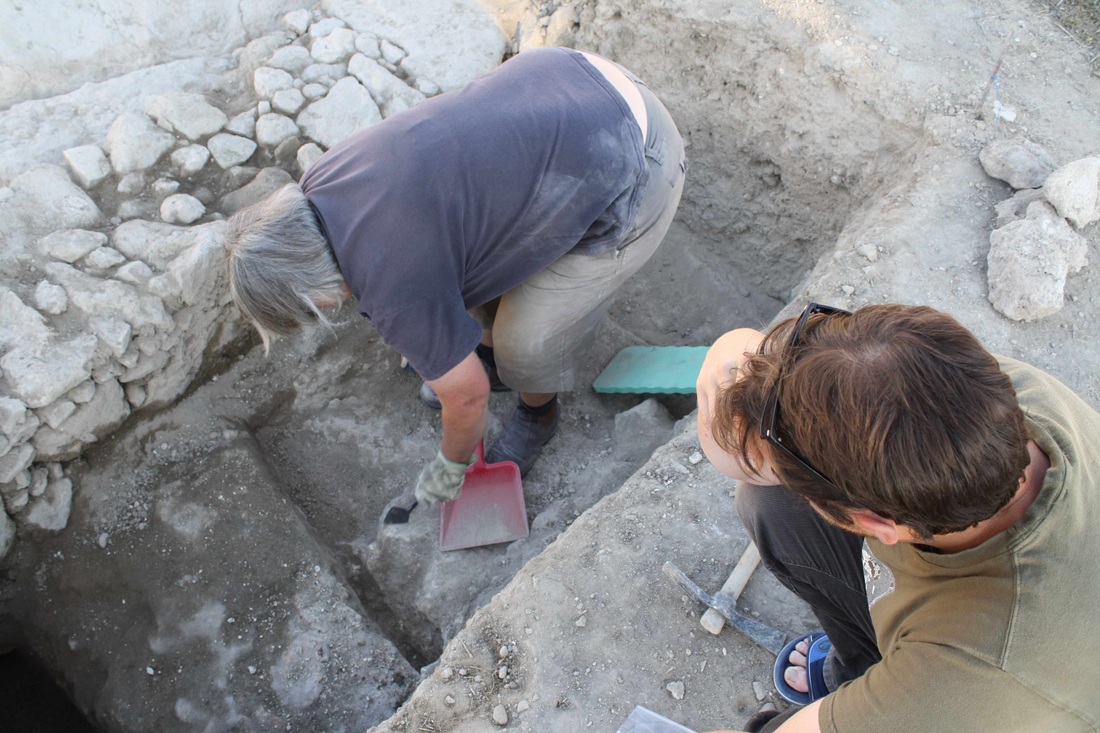
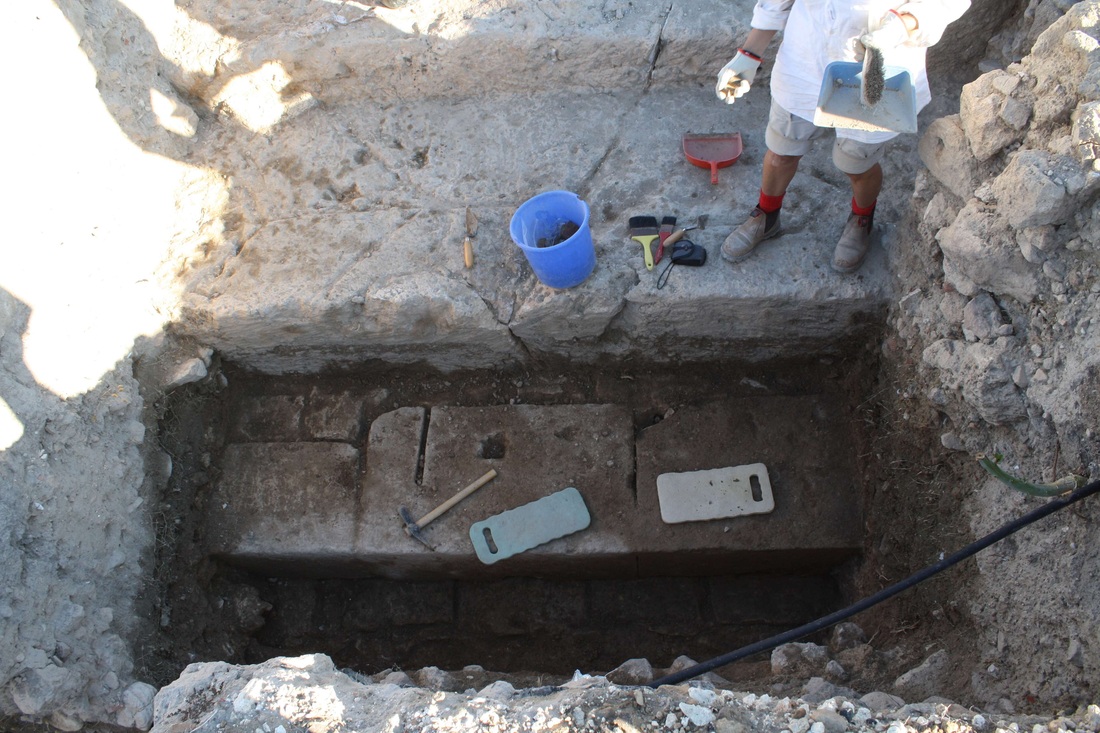
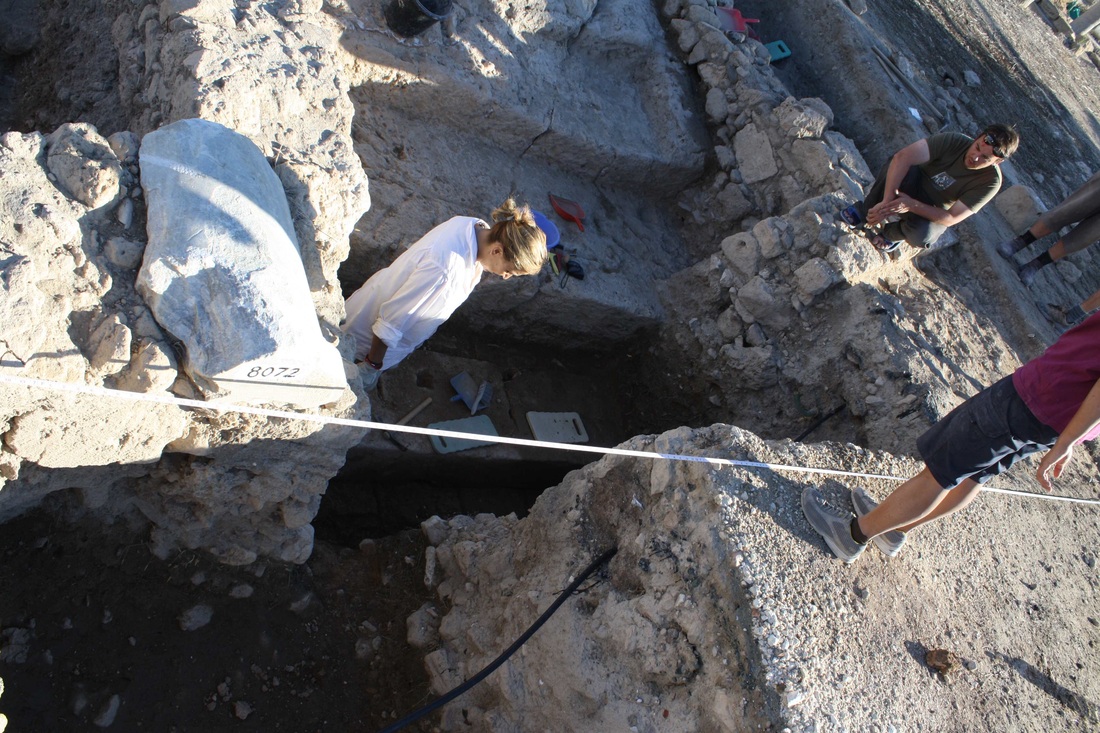
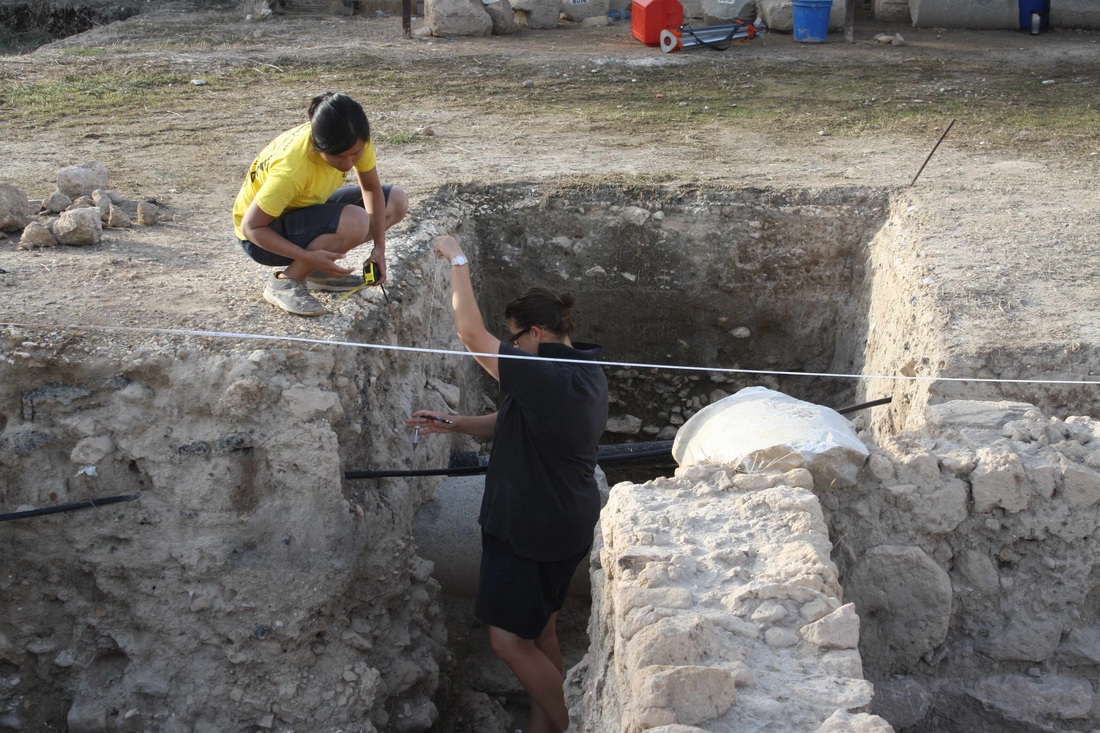
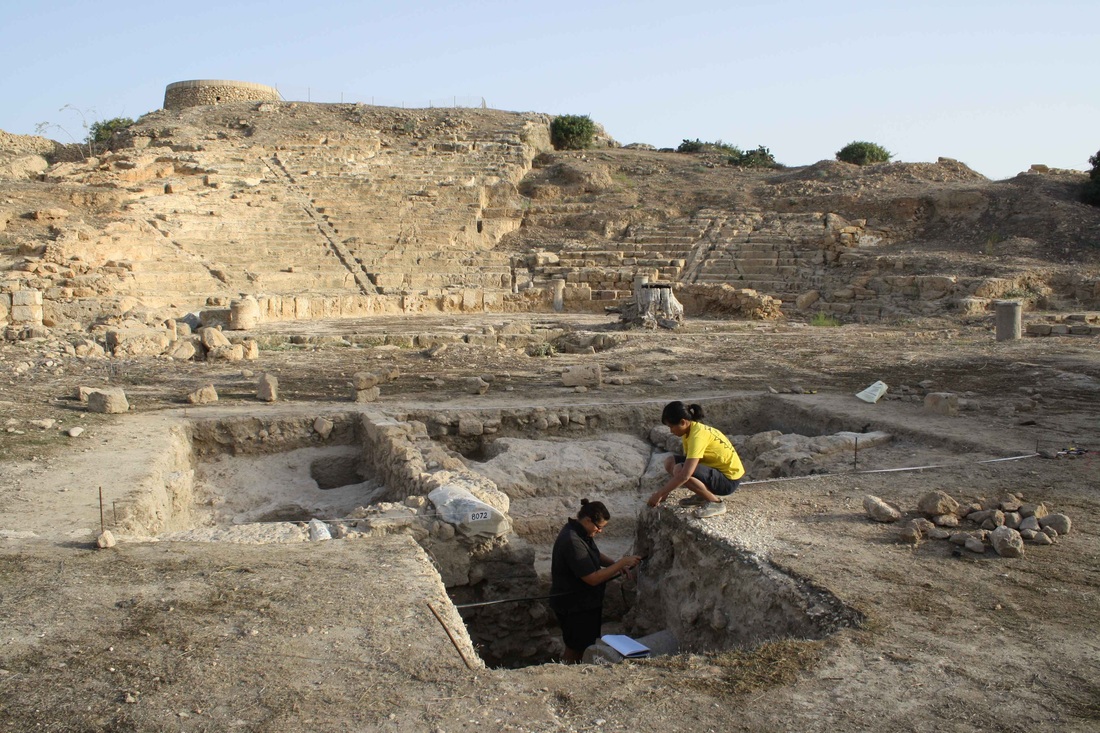
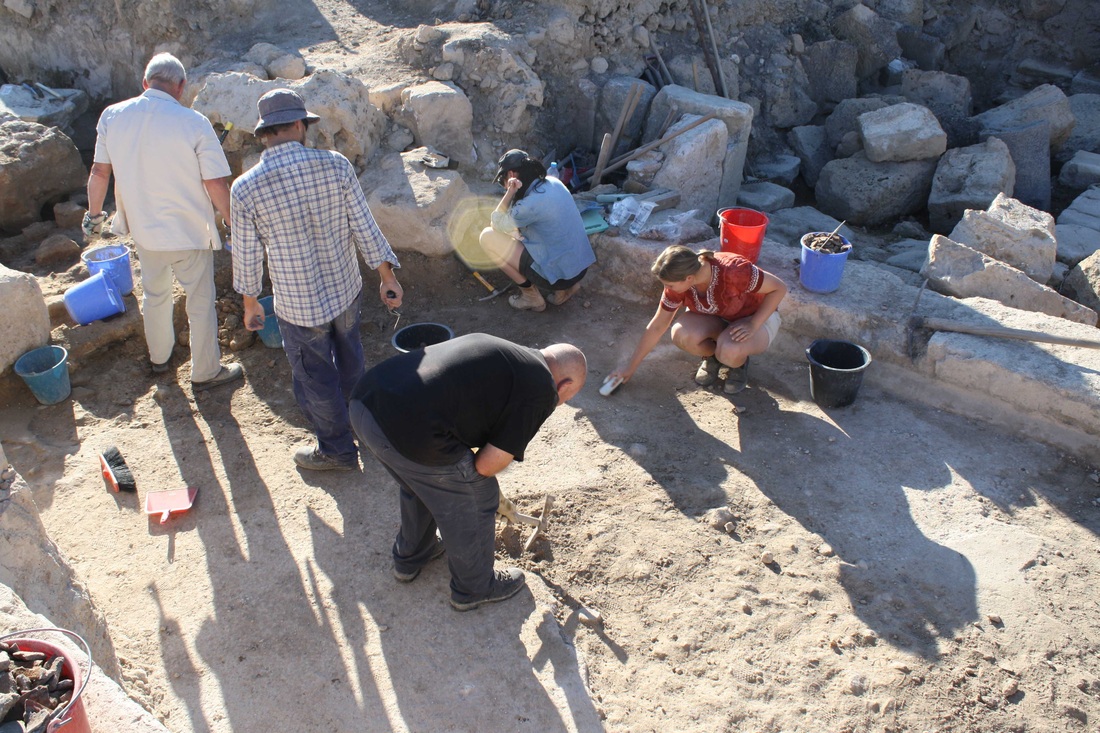
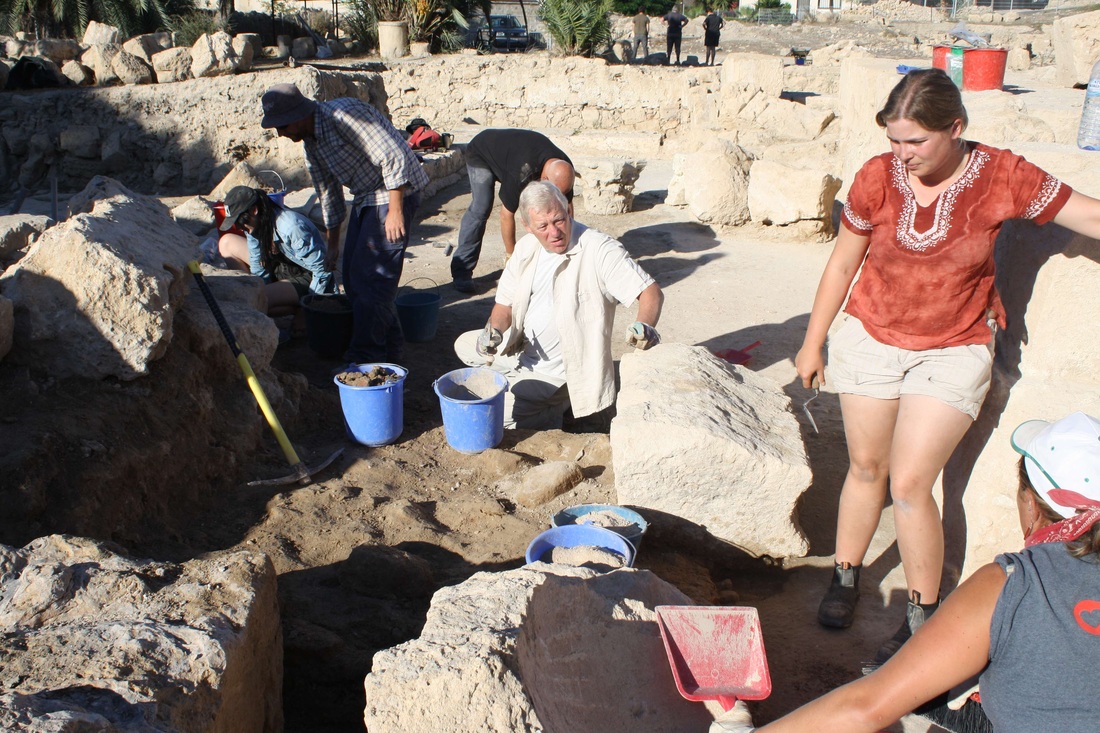
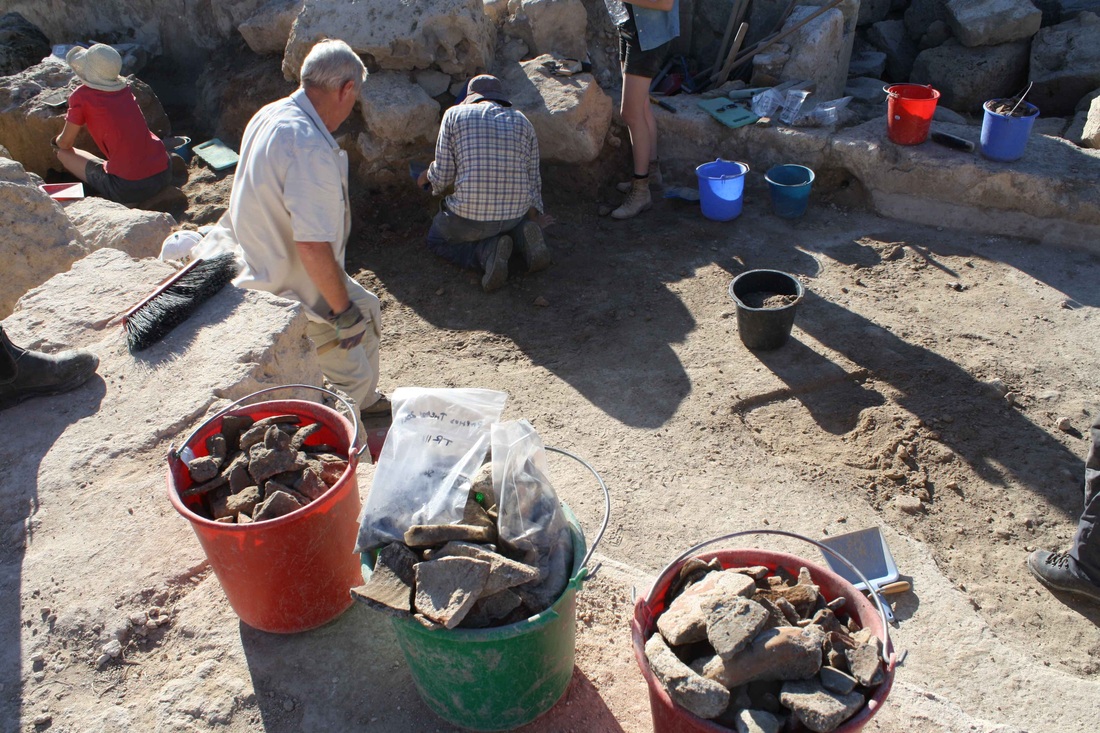
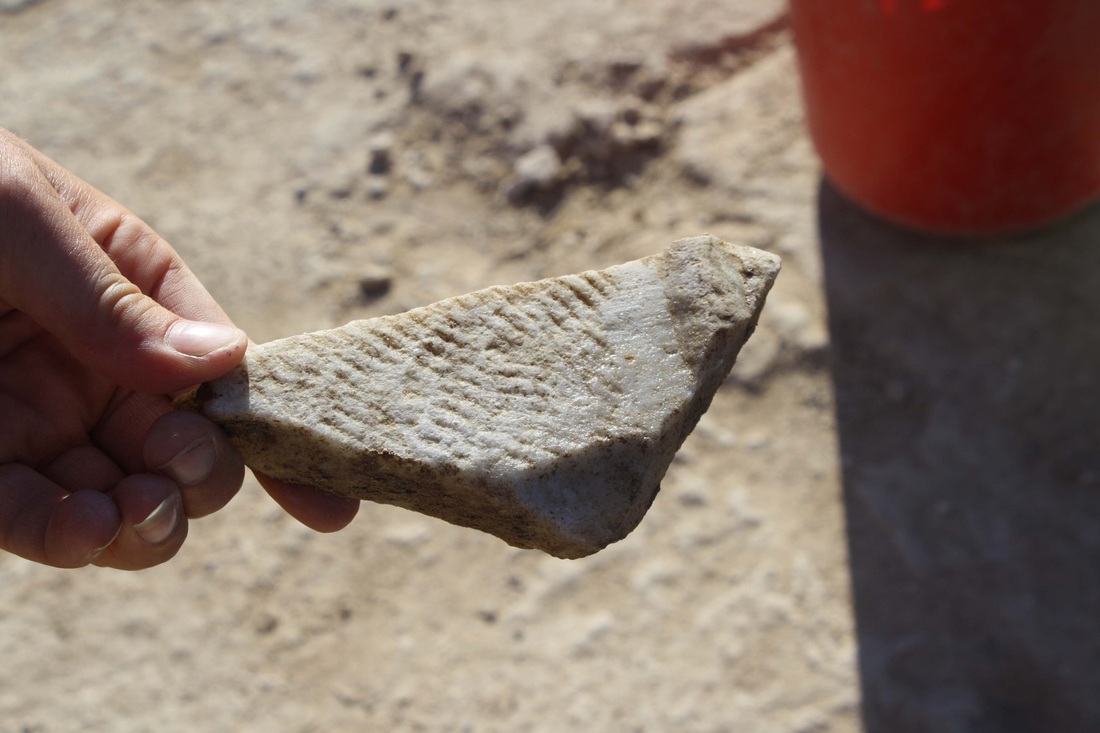
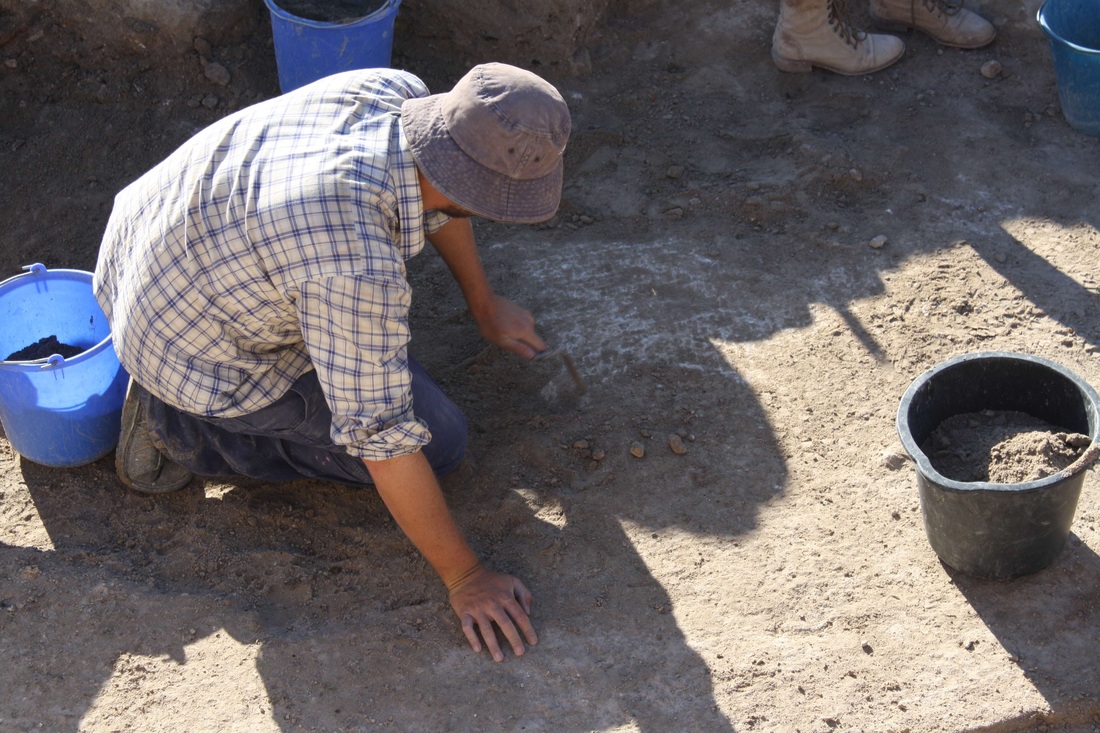
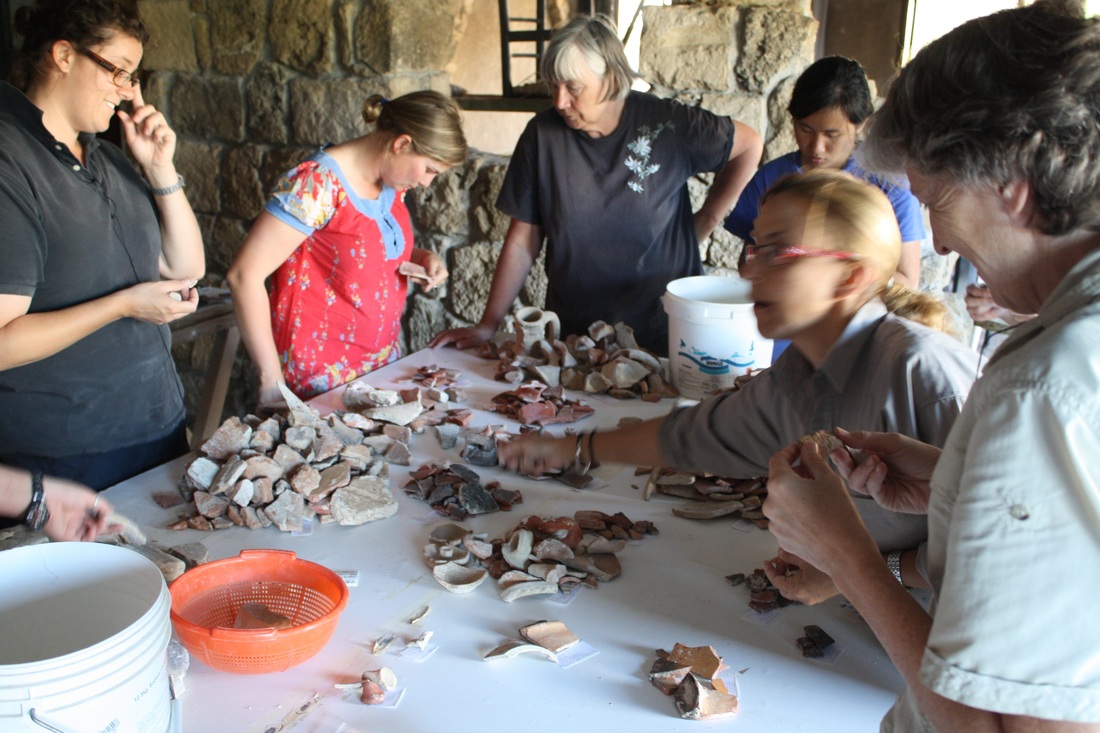
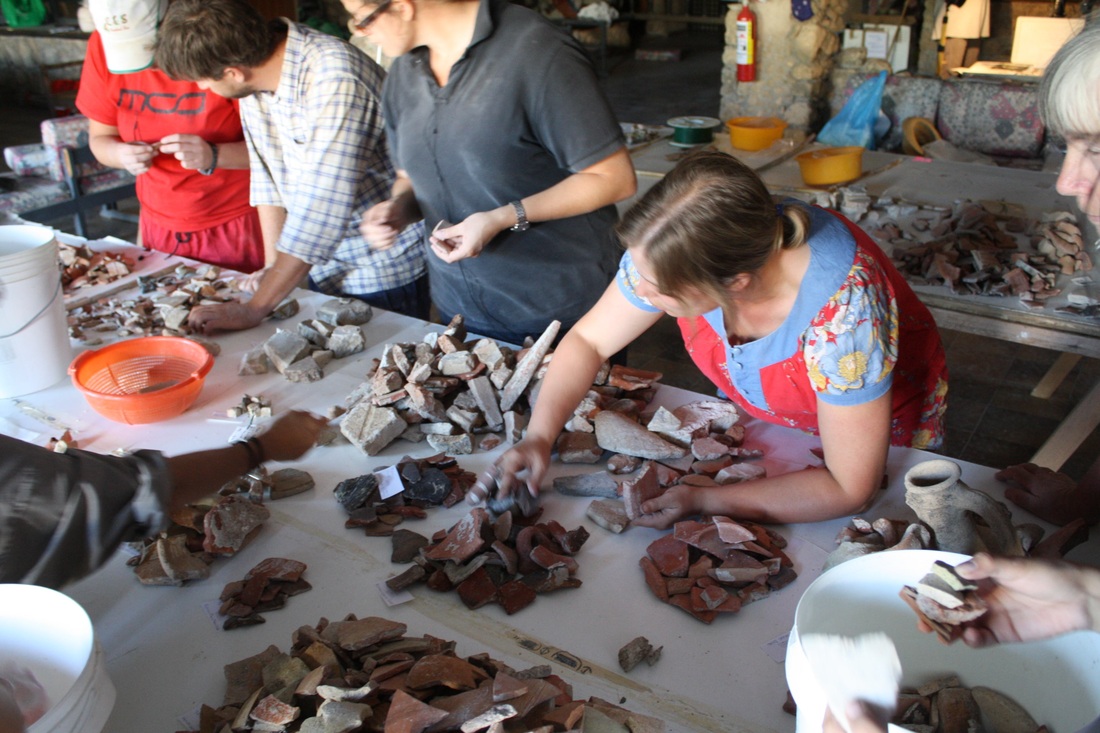
 RSS Feed
RSS Feed